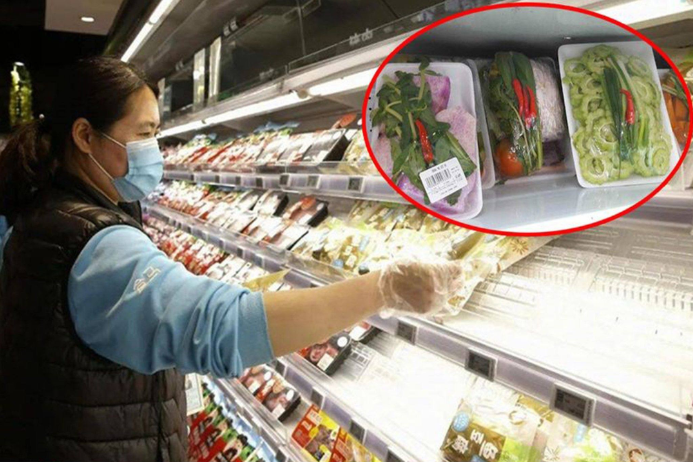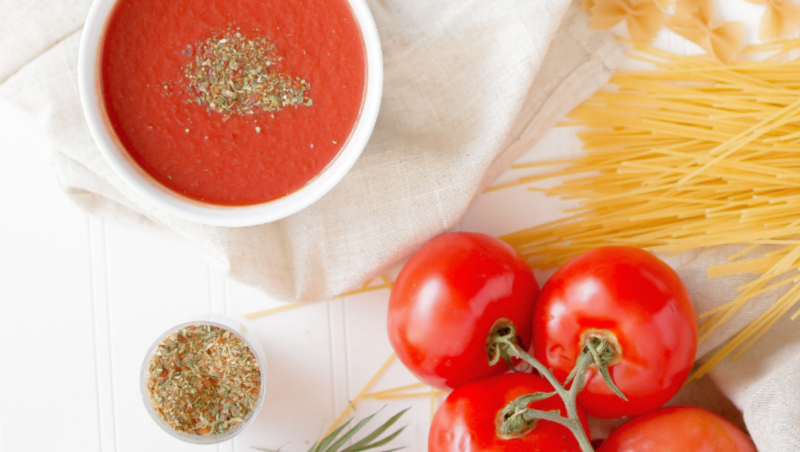Supermarkets have everything you need to fill your fridge and pantry, but some items are best left on the shelf. Many grocery store employees have seen firsthand the practices behind the scenes and caution against buying certain products, even when they’re on sale. From questionable pre-cut fruits to discounted seafood, these are six items you might want to think twice about buying to protect your health and budget.

1. Pre-Cut Fruit – Looks Can Be Deceiving
Pre-cut fruit trays are popular for their convenience and bright, fresh appearance, but there’s often more than meets the eye. Many supermarkets use bruised or overripe fruits that would otherwise go unsold, slicing them up to mask imperfections. While these trays may look appealing, they often contain fruit that’s past its prime.
Additionally, pre-cut fruits tend to lose nutrients faster than whole fruits, and they’re more susceptible to bacterial contamination. Since they’re already exposed to air and handled multiple times, they don’t stay fresh for long. To enjoy fruit that’s truly fresh, buy whole fruits and cut them at home.
2. Pre-Cooked Meals – A Shortcut with Hidden Ingredients
Pre-cooked meals are the ultimate convenience food; just pop them in the microwave, and you’ve got a meal. But did you know that many of these meals are made with ingredients approaching their expiration dates? To avoid waste, some supermarkets repurpose ingredients that might not be fresh enough to sell raw by cooking and packaging them into ready-to-eat dishes.
These meals are often loaded with preservatives, sodium, and artificial flavors to enhance their taste and extend their shelf life. If you’re craving convenience, consider making simple, fresh meals at home instead. Not only will it be healthier, but you’ll also know exactly what’s going into your food.
3. Out-of-Season Produce – Higher Cost, Lower Quality
When fruits and vegetables aren’t in season locally, they’re often imported from far-off locations, and that comes with a hefty price tag. Not only are out-of-season items more expensive, but they’re usually less flavorful and nutritious than their in-season counterparts. This is because they’re often harvested before they’re fully ripe and are subjected to long shipping times.
For instance, a strawberry that’s juicy and delicious in the summer might taste bland and have a grainy texture if purchased in the winter. Stick to seasonal produce to save money, enjoy fresher flavors, and get the most nutrients from your food.
4. Discounted Frozen Seafood – Risky at Best

Seafood lovers know that fresh fish can be expensive, so discounted frozen seafood may seem like a tempting option. However, when it comes to fish and shellfish, discounts often indicate age. Old seafood loses its firmness and flavor, and it may even have been refrozen multiple times before reaching your cart.
If you want the best quality seafood, look for items that are labeled “freshly frozen” and check the packaging date. Avoid anything with a significant markdown, as it’s usually a sign that the product is nearing the end of its shelf life. Buying fresh seafood from a trusted source ensures you’re getting both flavor and nutritional value.
5. Pre-Ground Meat – Mystery Meat in Disguise
Ground meat is a versatile ingredient, but it’s also one of the riskiest items to buy pre-packaged. When meat is ground, it exposes more surface area to bacteria, making it prone to quicker spoilage. Even worse, pre-ground meat is often made from a mix of meat scraps and trimmings that aren’t as fresh as they look.
In some cases, supermarkets use cuts that are nearing expiration and grind them up to extend their saleable life. By grinding your own meat at home or buying from a butcher, you can control the quality and freshness, ensuring a safer and more flavorful meal.
6. Pre-Made Sauces – Loaded with Preservatives and Hidden Sugars

Store-bought sauces, marinades, and dressings are convenient, but they come with a long list of ingredients you may not recognize. Many of these products contain preservatives, artificial colors, and added sugars to enhance flavor and extend their shelf life. While these sauces are fine to use occasionally, relying on them regularly can add a lot of unwanted ingredients to your diet.
Instead, try making your own sauces at home. Simple ingredients like olive oil, lemon juice, garlic, and fresh herbs can create a variety of flavors without the need for chemicals or artificial additives. Not only is this a healthier option, but it’s also more affordable in the long run.
Conclusion: Think Twice Before You Buy
While supermarkets offer convenience and variety, not everything on the shelf is worth buying. Pre-cut fruits, pre-cooked meals, out-of-season produce, discounted seafood, pre-ground meat, and pre-made sauces are often lower in quality or contain hidden ingredients that could affect your health. By choosing fresh, whole ingredients and making simple meals and condiments at home, you can enjoy better-tasting food and peace of mind knowing exactly what’s on your plate. So next time you’re tempted by these items, consider leaving them on the shelf – your body (and your wallet) will thank you.


